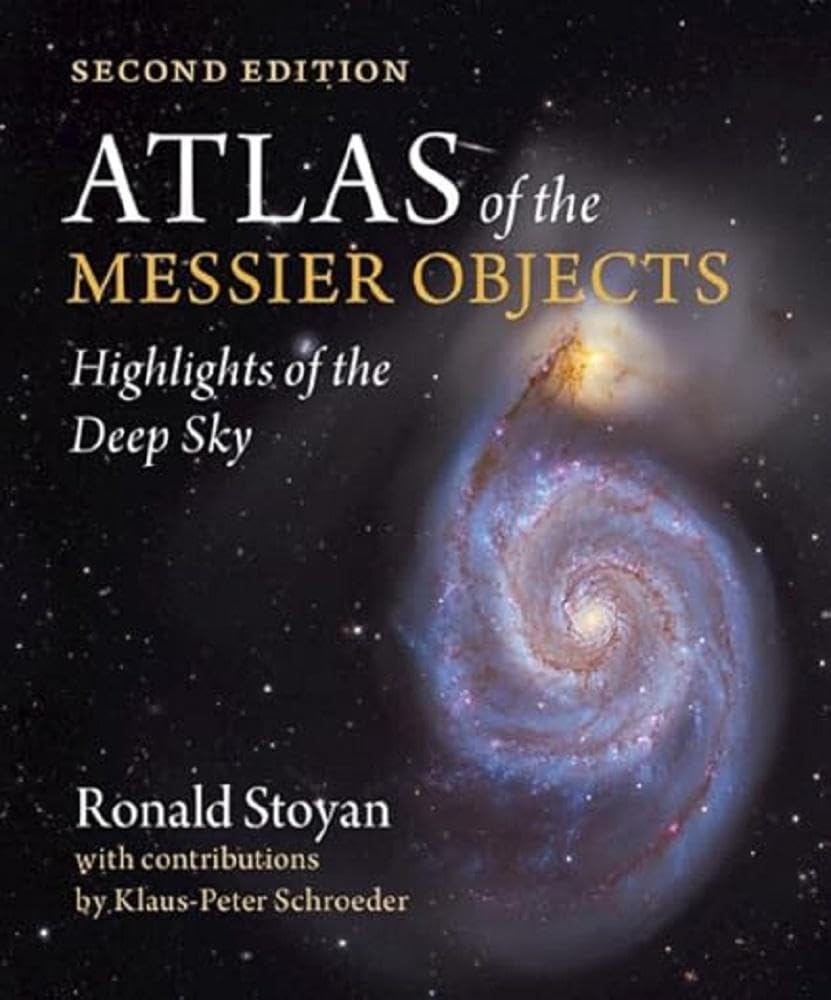

Full description not available
J**S
Phenomenal descriptions and images of every Messier object
Quite literally, this is a 372 page tome on all the deep space objects cataloged by Charles Messier in the 18th Century. His primary interest was comet hunting and the aim was to create a list of objects that would "save astronomers from confusing these nebulae with comets." More recent catalogs of deep sky objects have been published since Messier's catalog, yet this catalog endures in popularity among astronomers due to the simple diversity and beauty of the objects, themselves. From star clusters to galaxies, our 21st Century amateur telescopes far exceed the capabilities of those of the 18th Century.In the first 70 pages of the book, Stoyan & Schroeder provide abundant historical background of the development of this and other early lists of nebulous objects (including a lovely inset on Messier's 18th Century instruments). The next 296 pages covers each of the catalog's deep space objects across three main sub-headings: History, Astrophysics and Observation. These sub-headings provide historical discovery and background, the latest science and understanding, and what to expect and how to actually observe each object from binoculars to large diameter telescopes.Lusciously rich images are provide throughout; most from ground-based sources; and many from space telescopes. A four-page glossary, five-page list of astrophotograpers & their images, and an eight-page index of sources (including material published through 2022) finish out the book.The book is coffee table quality, printed expertly by the CPI Group in the UK. This is a fine reference volume, not especially intended to be used in the field, but of amazing utility for anyone interested in learning just about everything known (to date) about these (mostly) easily observed sights in our nighttime skies. Five stars is fully warranted, pun intended.
D**D
Best Messier book around
Simplly, put this is a big large heavy book that is best book on the Messier Objects that has been published today.
R**G
No mention of Caroline Herschel ?
I have only read the preview material from the book shown on this page. The presentation looks wonderful.One thing really puzzles and disappoints me. There is a section on the observers who followed Messier that curiously fails to mention William Herschel's sister Caroline Herschel. Caroline provided critical assistance to her brother and later became famous for her own independent observations. She also did seminal work in cataloging nebulae and star clusters and helped to train her nephew John Herschel in Astronomy. Without doubt Caroline Herschel was one of the great astronomers of that era.